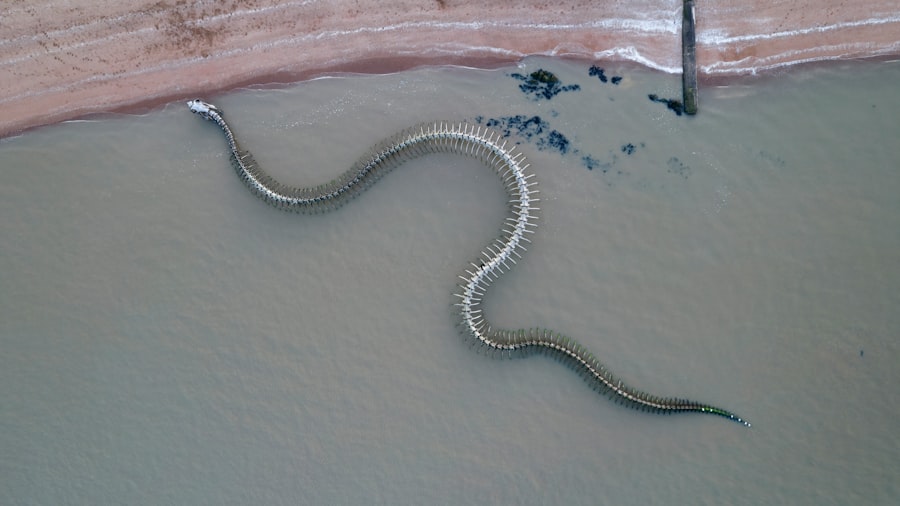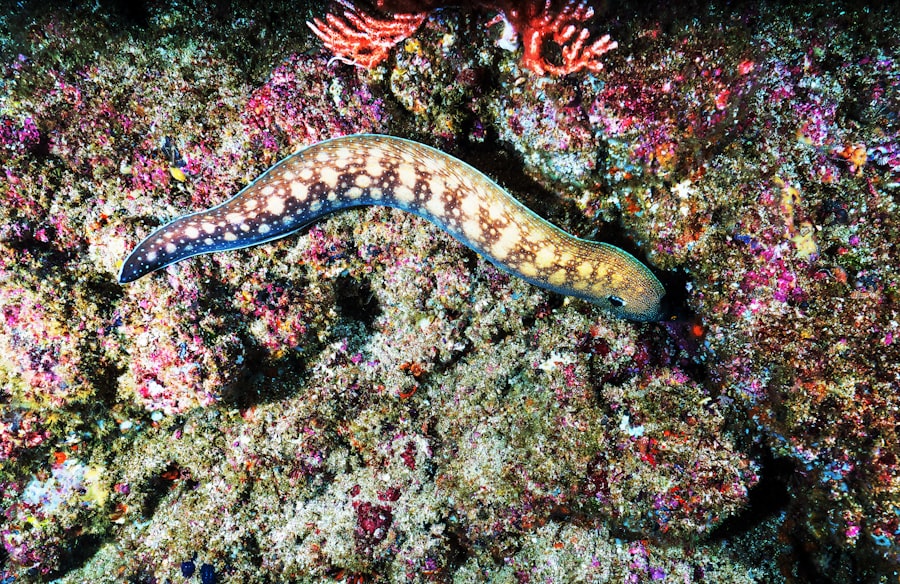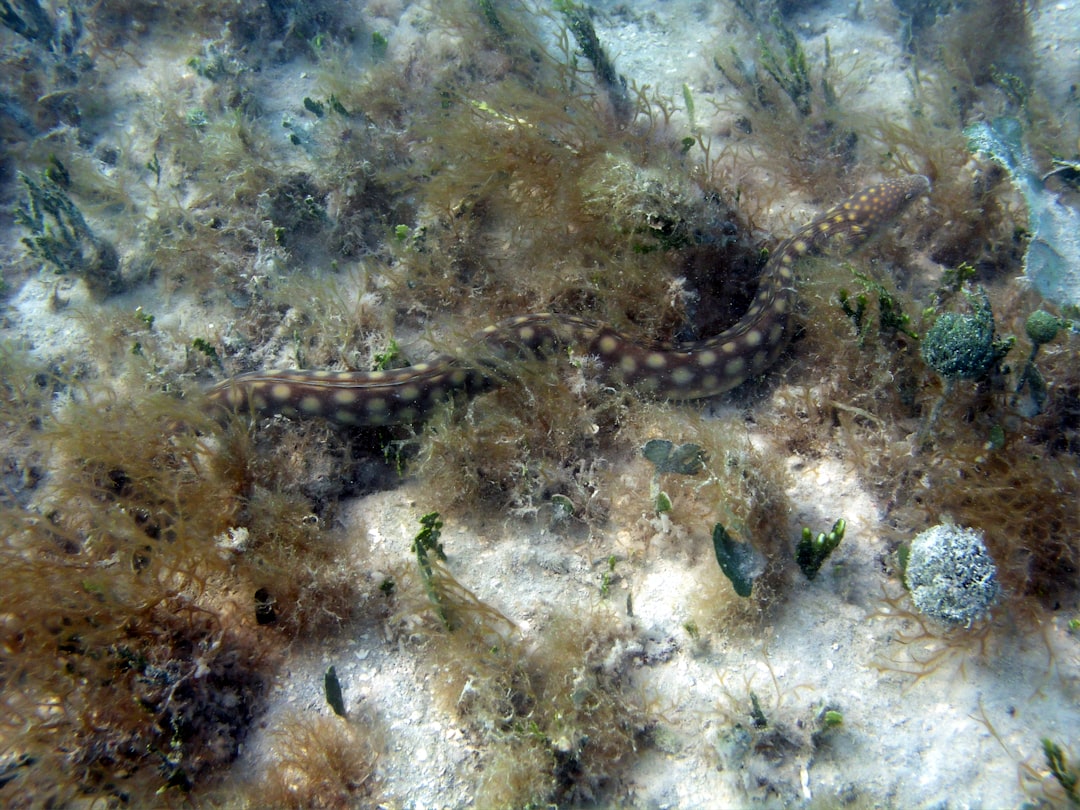The Drake Passage Sea Snake, a remarkable marine reptile, has captured the attention of researchers and enthusiasts alike due to its unique adaptations and intriguing behaviors. This species, which inhabits the frigid waters of the Drake Passage, serves as a testament to the resilience of life in extreme environments. The Drake Passage itself, located between the southern tip of South America and Antarctica, is notorious for its turbulent waters and unpredictable weather patterns.
Despite these challenges, the sea snake has carved out a niche for itself in this harsh ecosystem, showcasing the wonders of evolution and adaptation. The significance of the Drake Passage Sea Snake extends beyond its biological attributes; it also plays a crucial role in the marine food web. As a predator, it helps maintain the balance of marine life in its habitat.
Furthermore, understanding this species can provide insights into broader ecological dynamics and the impacts of climate change on marine ecosystems. As researchers delve deeper into the life of the Drake Passage Sea Snake, they uncover not only its biological intricacies but also its importance in the context of environmental conservation.
Key Takeaways
- The Drake Passage Sea Snake is a rare and elusive species found in the treacherous waters of the Drake Passage.
- This species is known to inhabit the cold, deep waters of the Southern Ocean, with a distribution range that includes the Antarctic Peninsula and the sub-Antarctic islands.
- The Drake Passage Sea Snake is characterized by its slender body, paddle-like tail, and distinctive black and white coloration, which helps it blend in with its surroundings.
- These sea snakes are known to be solitary and elusive, feeding primarily on small fish and crustaceans found in their deep-sea habitat.
- Little is known about the reproduction and life cycle of the Drake Passage Sea Snake, but it is believed to exhibit unique behaviors and adaptations to survive in its harsh environment.
Habitat and Distribution of the Drake Passage Sea Snake
The habitat of the Drake Passage Sea Snake is as dynamic as the waters it inhabits. Found primarily in the cold, nutrient-rich waters of the Drake Passage, this species thrives in an environment characterized by strong currents and varying temperatures. The sea snake is often spotted near underwater structures such as reefs and rocky outcrops, where it can find shelter and hunting grounds.
These areas are teeming with marine life, providing ample opportunities for feeding and breeding. Geographically, the distribution of the Drake Passage Sea Snake is relatively limited compared to other marine species. It is primarily found in the waters surrounding the southern tip of South America and extends towards parts of Antarctica.
This restricted range makes it particularly vulnerable to environmental changes and human activities. As climate change continues to alter oceanic conditions, the habitats that support this unique species may be at risk, prompting concerns about its long-term survival.
Physical Characteristics of the Drake Passage Sea Snake

The physical characteristics of the Drake Passage Sea Snake are both fascinating and functional. This species exhibits a streamlined body that allows for efficient swimming in turbulent waters. Its coloration typically features a blend of dark hues with lighter patterns, providing camouflage against predators and prey alike.
The scales are smooth and hydrodynamic, further enhancing its ability to navigate through its aquatic environment. In addition to its sleek body, the Drake Passage Sea Snake possesses specialized adaptations that aid in its survival. Its elongated tail is powerful and aids in propulsion, while its flattened head allows for easier maneuvering among rocky crevices.
The snake’s eyes are adapted for underwater vision, enabling it to spot prey from a distance. These physical traits not only contribute to its hunting prowess but also play a vital role in its overall survival in a challenging habitat.
Behavior and Diet of the Drake Passage Sea Snake
| Aspect | Details |
|---|---|
| Habitat | Drake Passage Sea Snake is found in the waters of the Drake Passage, near the Antarctic Peninsula. |
| Behavior | It is a solitary and elusive species, often hiding in kelp forests and rocky crevices. |
| Diet | The sea snake primarily feeds on small fish, such as lanternfish and myctophids. |
| Reproduction | Little is known about their reproductive behavior, but they are believed to give birth to live young. |
The behavior of the Drake Passage Sea Snake is a reflection of its adaptation to a life spent in cold waters. This species is primarily diurnal, engaging in most of its hunting activities during daylight hours. It employs a combination of stealth and speed to capture prey, often lying in wait before striking with precision.
The sea snake’s diet mainly consists of fish and other small marine organisms, which it swallows whole due to its flexible jaw structure. Socially, the Drake Passage Sea Snake tends to be solitary, although individuals may occasionally be seen basking together on rocky outcrops or during mating season. This solitary behavior is likely an adaptation to reduce competition for food resources in an environment where prey can be scarce.
The sea snake’s hunting strategy is highly effective; it uses both ambush tactics and active pursuit to secure its meals, showcasing its versatility as a predator.
Reproduction and Life Cycle of the Drake Passage Sea Snake
Reproduction among the Drake Passage Sea Snake is a complex process that reflects its adaptation to a challenging environment. Mating typically occurs during specific seasons when water temperatures rise slightly, signaling favorable conditions for breeding. Females are known to give birth to live young rather than laying eggs, which is an unusual trait among reptiles.
This viviparous reproduction method allows the young snakes to develop in a more stable environment within their mother’s body until they are ready to face the external world. The life cycle of the Drake Passage Sea Snake begins with the birth of several offspring, which are relatively independent from birth.
As they grow, they undergo several molts, shedding their skin periodically as they increase in size. The growth rate can vary significantly based on environmental conditions and food availability, making survival during early life stages particularly challenging.
Predators and Threats to the Drake Passage Sea Snake

Despite being an adept predator itself, the Drake Passage Sea Snake faces threats from various natural predators within its ecosystem. Larger fish species and seabirds are known to prey on juvenile sea snakes, posing significant risks during their vulnerable early stages of life. Additionally, competition for food resources with other marine predators can impact their survival rates, particularly in times of scarcity.
Human activities also pose substantial threats to the Drake Passage Sea Snake. Overfishing in the region can deplete their food sources, while pollution from maritime traffic can degrade their habitat quality. Climate change further exacerbates these challenges by altering ocean temperatures and currents, potentially disrupting breeding patterns and food availability.
As these threats continue to mount, understanding their impact on the sea snake’s population becomes increasingly critical for conservation efforts.
Conservation Status of the Drake Passage Sea Snake
The conservation status of the Drake Passage Sea Snake remains a topic of concern among marine biologists and conservationists. Currently classified as a species of least concern by some organizations, there is growing apprehension regarding its long-term viability due to environmental changes and human impacts. The limited distribution of this species makes it particularly susceptible to localized threats that could lead to population declines.
Efforts to monitor and protect the Drake Passage Sea Snake are essential for ensuring its survival. Conservation initiatives aimed at preserving marine habitats and regulating fishing practices can help mitigate some of the pressures faced by this unique species. Additionally, raising public awareness about the importance of marine biodiversity can foster greater support for conservation measures that benefit not only the sea snake but also the broader ecosystem it inhabits.
Historical and Cultural Significance of the Drake Passage Sea Snake
Historically, the Drake Passage has been a site of exploration and discovery, with many seafarers recounting tales of encounters with various marine creatures, including sea snakes. These narratives have contributed to a rich tapestry of cultural significance surrounding the region’s wildlife. In some cultures, sea snakes have been viewed with reverence or fear, often symbolizing mystery and danger associated with the unpredictable nature of oceanic waters.
The cultural significance of the Drake Passage Sea Snake extends beyond folklore; it has also inspired scientific inquiry and artistic expression. Researchers have sought to understand its ecological role within marine ecosystems, while artists have drawn inspiration from its unique form and behavior. This interplay between culture and science highlights the importance of preserving not only the species itself but also the stories and knowledge that surround it.
Research and Discoveries about the Drake Passage Sea Snake
Research on the Drake Passage Sea Snake has yielded valuable insights into its biology and ecology over recent years. Scientists have employed various methods, including tagging and tracking studies, to better understand its movement patterns and habitat preferences. These studies have revealed important information about migration routes and feeding behaviors that were previously unknown.
Recent discoveries have also shed light on how climate change is affecting this species’ habitat. Changes in water temperature and salinity levels have been linked to shifts in prey availability, prompting researchers to investigate potential adaptive responses by the sea snake. As studies continue to unfold, they promise to enhance understanding not only of this particular species but also of broader ecological trends within marine environments.
Interactions with Humans and Potential Risks
Interactions between humans and the Drake Passage Sea Snake are relatively limited due to its remote habitat; however, they do occur occasionally. Fishermen operating in these waters may inadvertently catch sea snakes while targeting other species, leading to unintentional harm or mortality. Additionally, increased maritime traffic poses risks through potential collisions or pollution incidents that could impact their habitat.
The potential risks associated with human-sea snake interactions underscore the need for responsible practices in marine environments. Educating fishermen about sustainable practices can help minimize negative impacts on this unique species while promoting coexistence between humans and wildlife.
Future Prospects for the Study and Protection of the Drake Passage Sea Snake
Looking ahead, future prospects for studying and protecting the Drake Passage Sea Snake appear promising yet challenging. Continued research efforts will be crucial in monitoring population trends and understanding how environmental changes affect this species’ survival. Collaborative initiatives involving scientists, conservationists, and local communities can foster a more comprehensive approach to protecting marine biodiversity in this region.
Moreover, raising awareness about the ecological significance of the Drake Passage Sea Snake can galvanize support for conservation measures aimed at preserving its habitat. Engaging stakeholders through educational programs can promote sustainable practices that benefit both local communities and marine ecosystems. As researchers strive to unlock more secrets about this enigmatic creature, their findings will undoubtedly contribute to broader efforts aimed at safeguarding our planet’s precious marine life for generations to come.
The Drake Passage is a renowned body of water that connects the Atlantic and Pacific Oceans, and it is often associated with the diverse marine life that inhabits its waters, including the elusive sea snake. For those interested in exploring more about the geographical significance and the unique ecosystems of such regions, a related article can be found on MyGeoQuest. This article delves into various geographical phenomena and their impact on marine biodiversity. To learn more, you can visit the article by clicking on this link.
WATCH NOW! Drake Passage: Earth’s Deadliest Waters Revealed
FAQs
What is the Drake Passage sea snake?
The Drake Passage sea snake is a species of sea snake that is found in the waters of the Drake Passage, a body of water between South America’s Cape Horn and the South Shetland Islands of Antarctica.
What does the Drake Passage sea snake look like?
The Drake Passage sea snake is a relatively small sea snake, with a slender body and paddle-like tail for swimming. It has distinctive black and white bands along its body, which help to camouflage it in the cold, icy waters of the Drake Passage.
What is the habitat of the Drake Passage sea snake?
The Drake Passage sea snake is found in the cold, nutrient-rich waters of the Drake Passage, where it feeds on small fish and crustaceans. It is adapted to the extreme cold and harsh conditions of this region.
Is the Drake Passage sea snake venomous?
Yes, the Drake Passage sea snake is venomous, like all sea snakes. However, it is not considered to be a significant threat to humans, as it is not aggressive and rarely encounters people.
Is the Drake Passage sea snake endangered?
The conservation status of the Drake Passage sea snake is not well-known, as it is a relatively understudied species. However, it is likely that its population is stable, as it is well-adapted to its cold, remote habitat.
